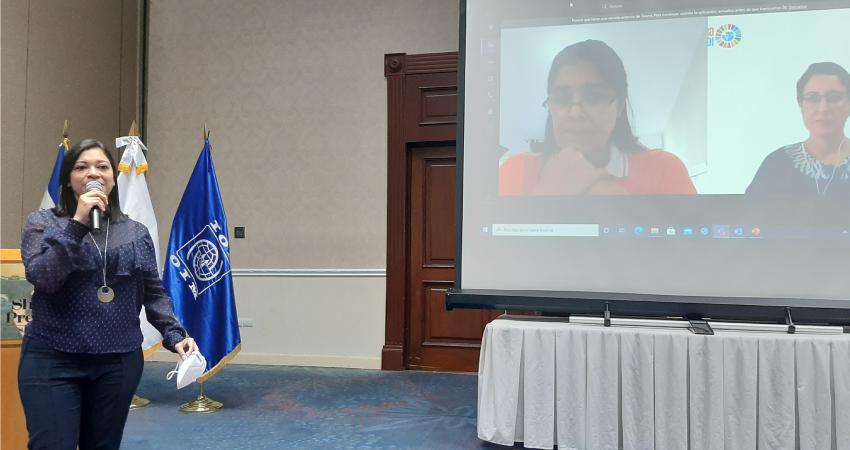Key staff of DGME El Salvador completed training on migration and gender with IOM

Census data from Central American countries for the period 2000-2010 showed that 53.05 percent of the migrant population originating in Central America are women.[1] The trend remains the same in El Salvador, a country that counts more than 1.5 million of its citizens living abroad[2]. 2016 data from the country's General Directorate of Migration and Foreigners (DGME) indicated that most of them were women between the ages of 18 and 35, mainly engaged in domestic work and sending an average of 20 percent of their salaries to their families.[3]
Despite these contributions, IOM has identified that these same women are more exposed to the risks of migration based on their gender, including the possibility of fraud, abuse and the risk of being victims of human trafficking. In order to sensitize public officials who work with migrant women, IOM El Salvador developed a specialized course on migration and gender.
Throughout 5 face-to-face sessions, 17 civil servants from the DGME learned about the particularities of the migration experience according to gender and updated their knowledge of the protocol for assisting national and foreign women victims of gender-based violence.
"The training was excellent, I will apply it in the next instruction that will be updated regarding the Performance Evaluation of the Functional position, using inclusive language and the gender approach," said Marco Tulio Aguilar Alvarado, from the Human Resources Management Department of the DGME.
"I learned that there are different institutions that can help women and LGBTI+ people. Since I am in an area of work where there is a lot of attention to foreigners, I will look for ways to identify the person and know if they are in a vulnerable condition", added Kelly Roxana López Rodríguez (Window Department, Immigration Management).
The course was held in San Salvador between February 15 and 24, 2021, within the framework of the Western Hemisphere Program, thanks to funding from the U.S. Department of State Bureau of Population, Refugees and Migration.
[1] Secretaría General del SICA. (2016). Factores de Riesgo y Necesidades de Atención para las Mujeres Migrantes en Centroamérica, Estudio de actualización sobre la situación de la violencia contra las mujeres migrantes en la ruta migratoria en Centroamérica.
[2]Magarín, L. (2017). Mujeres, niñez y migración: la experiencia de El Salvador. Available at https://crpd.cepal.org/1e/sites/crpd1e/files/presentations/liduvinamagarin_elsalvador.pdf
[3] Ibid.
